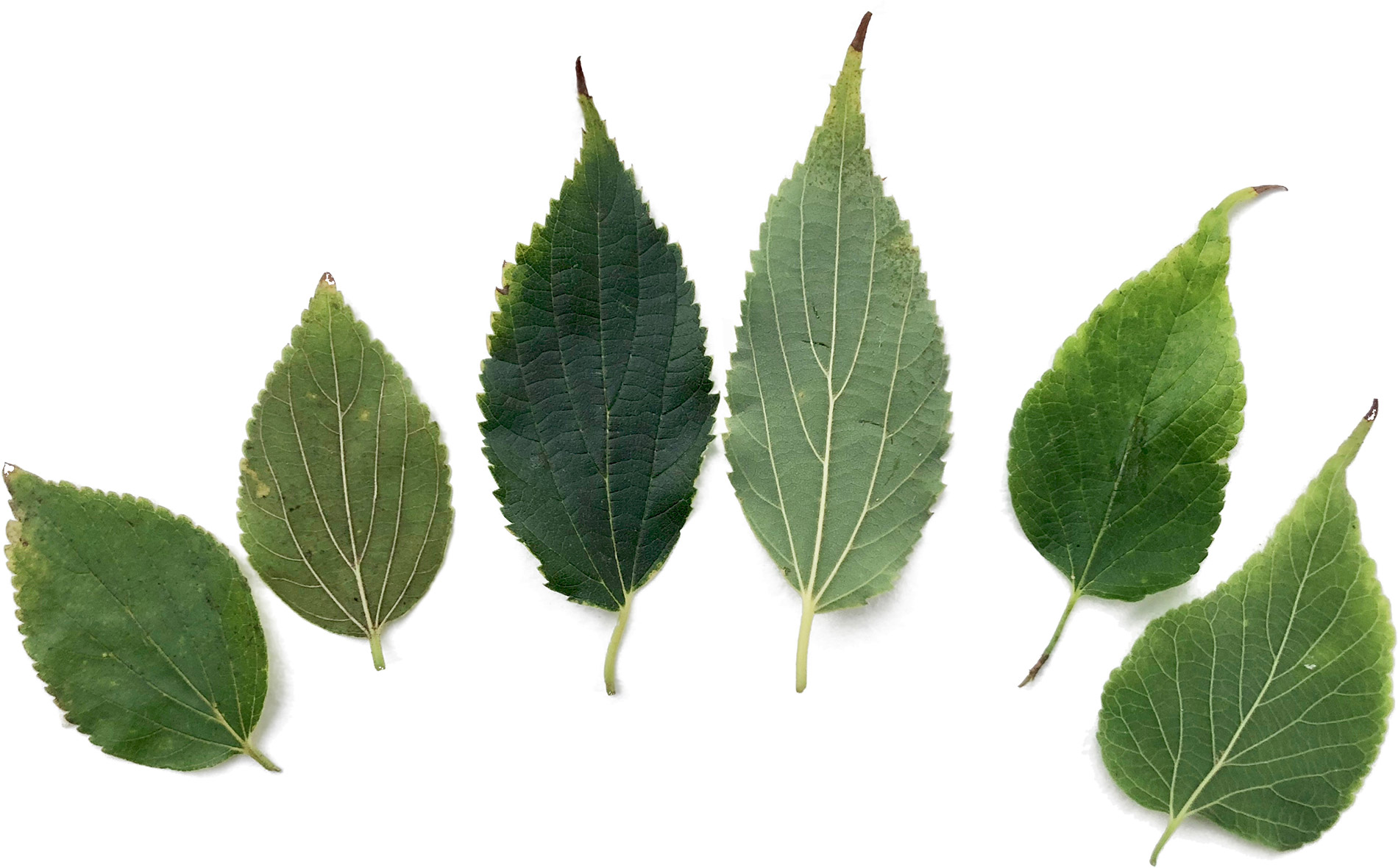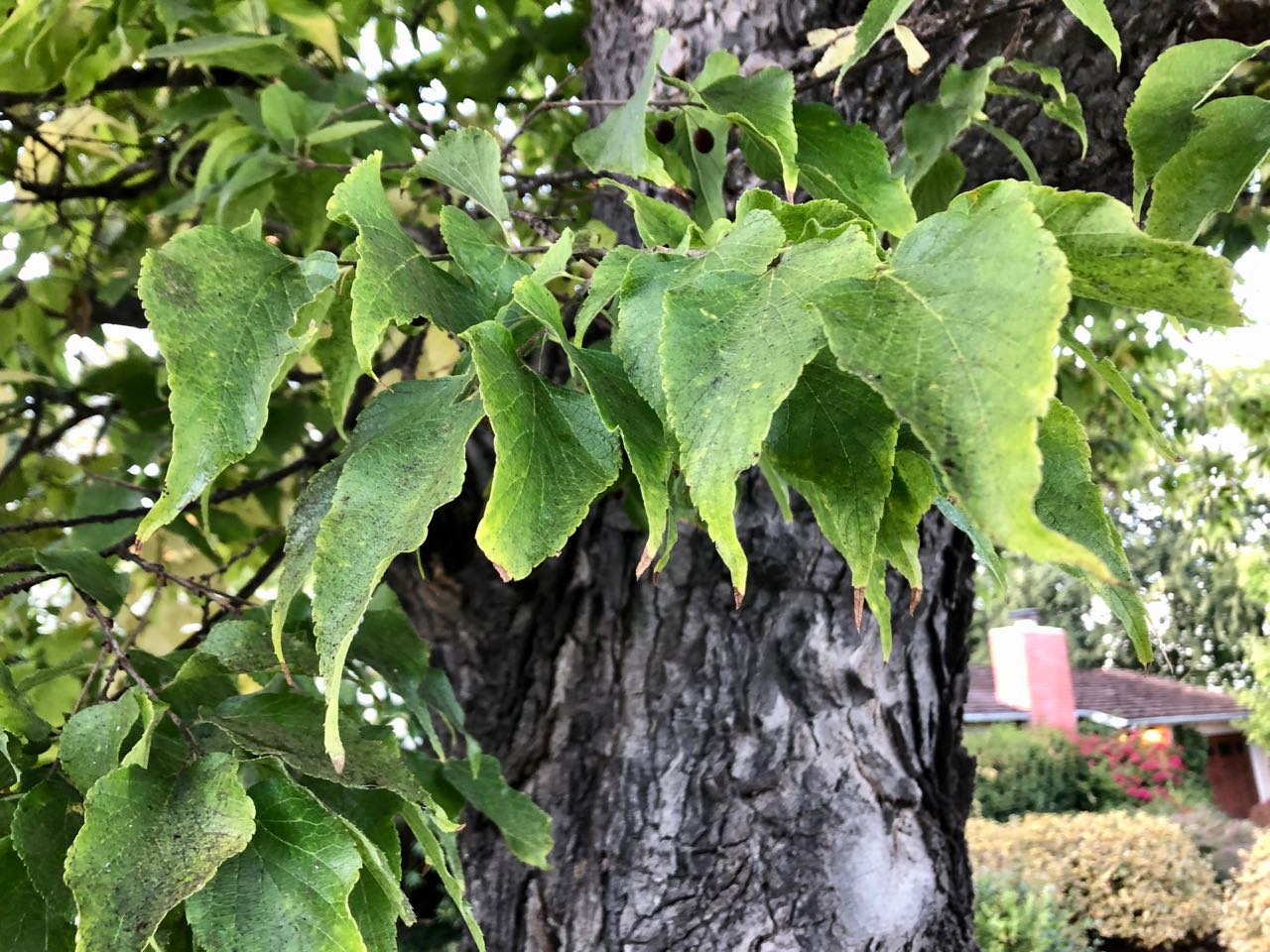Celtis occidentalis
 common hackberry
common hackberry
Eastern United States, Quebec

Comparison of upper and lower leaf surfaces of (left to right) Celtis sinensis (teeth, when present, don’t extend to leaf stalk), C. australis (leaf undersides fuzzy), C. occidentalis (leaf widest in basal half). All leaves from campus specimens. Sairus Patel, 17 Sep 2019
A deciduous tree with dark, corrugated bark and asymmetrical leaves up to 5 inches long, shiny on top and paler below, disposed in two rows and having well-spaced fine saw-teeth. The orange-purple pea-sized fruits have a single seed and not much flesh. Still, Peking man in paleolithic times was already using hackberries as food. A related species, desert hackberry, was eaten by the Papago Indians raw, dried, or ground up. Several specimens can be seen at 835 Pine Hill Road and on toward the Alvarado Row end.
About this Entry: The main text of this entry is from the book Trees of Stanford and Environs, by Ronald Bracewell, published 2005. Family updated from Ulmaceae to Cannabaceae; all locations verified Sep 2019 (SP).





